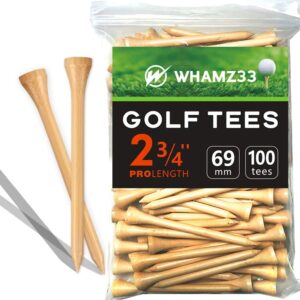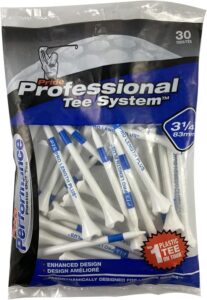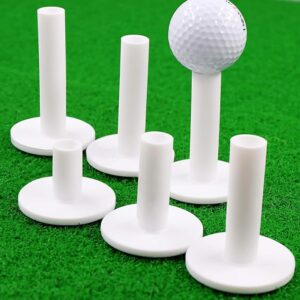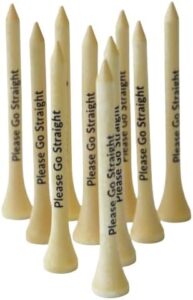Every little thing matters in the sport of golf. From the type of clubs you use to the condition of the greens, golfers are known for their attention to precision. Among the many pieces of equipment that play a crucial role in a golfer’s performance, golf tees often take a backseat in terms of importance. However, in this article, we will shed light on how these seemingly small gears can have a significant impact on your golf game.
Table of Contents
Introduction
The painstaking attention to detail in the game of golf is well known. Whether you’re a professional or an amateur golfer, every aspect of the game matters, including the seemingly insignificant golf tee. Golf tees, those small pegs that hold your ball at the tee box, can have a surprising impact on your performance. In this article, we’ll explore how golf tees can make a big difference in your game and why choosing the right one matters.
The Role of Golf Tees
Golf tees serve as the launchpad for your golf ball. Placed on the ground, they elevate the ball slightly, allowing you to strike it cleanly with your club. While it may seem like a minor detail, the height, material, and design of your golf tee can influence various aspects of your game.
Types of Golf Tees
Wooden Tees
The most traditional and popular style of tee is made of wood. They are known for their durability and natural feel. However, they can break more easily than other materials.

Plastic Tees
Plastic tees are lightweight and durable. They come in various lengths and colors, allowing you to choose the one that suits your game best.

Rubber Tees
Rubber tees are typically used on driving ranges. They are sturdy and can withstand heavy use, making them a practical choice for practice sessions.

Choosing the Right Tee Height
The height of your tee can affect your ball’s trajectory and distance. Different clubs require different tee heights. Ensuring the correct tee height for each club in your bag can lead to more consistent and accurate shots.
Impact on Drive Distance
Believe it or not, the type of tee you use can impact your drive distance. With the right tee, you can optimize your launch angle and reduce friction between the ball and the tee, resulting in longer drives.
Accuracy and Consistency
Consistency is key in golf. Using the same type and height of tee for each tee shot can help you maintain consistency in your swing and shot placement.
Durability and Reusability
Investing in durable tees can save you money in the long run. While wooden tees can break, some plastic and rubber tees are designed for multiple uses.
Eco-Friendly Options
For environmentally conscious golfers, there are eco-friendly tee options made from biodegradable materials. These tees break down naturally, leaving no lasting impact on the environment.

Maintenance and Care
Taking care of your golf tees is essential. Clean them regularly, and replace any worn or damaged tees to ensure they continue to perform optimally.
Conclusion
In conclusion, don’t underestimate the impact of golf tees on your game. These small but crucial pieces of equipment can enhance your drive distance, accuracy, and overall performance. Choosing the right tee and maintaining it properly can make a significant difference in your golfing experience.
FAQs
Q1: Can I reuse golf tees?
Yes, you can reuse some types of golf tees, especially durable plastic and rubber ones designed for multiple uses.
Q2: Do professional golfers use specific types of tees?
Professional golfers often have specific preferences, but they typically choose tees that suit their playing style and the conditions of the course.
Q3: How do I know the right tee height for my driver?
Experiment with different tee heights on the driving range to find the one that produces the best results for your swing and club.
Q4: Are wooden tees better than plastic tees?
It depends on personal preference. Wooden tees offer a natural feel, while plastic tees are known for their durability and variety.
Q5: Are there any eco-friendly golf tee options available?
Yes, there are eco-friendly golf tees made from biodegradable materials that are better for the environment.
